Business Hours
| September 26, 2023Mishpacha meets with five Lakewood business owners who operate exclusively during bein hasedorim
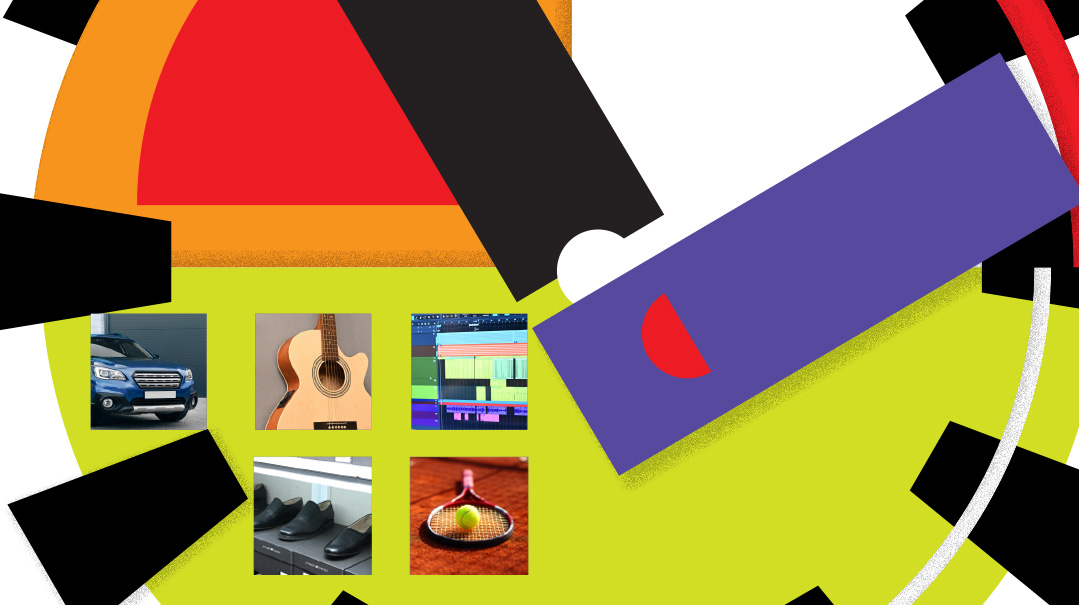
Photos: Langsam Studio, Avi Gass
One Step Ahead
Yossi Brull
Shoe importer & seller
How many different shades of black can there possibly be? A walk into a basement in the Pine Street neighborhood of Lakewood, New Jersey, may give you a clue.
Deals on Daniel, a yeshivish shoe lovers’ paradise, operates four locations. This — the original — is still its most popular branch.
There are no large, welcoming sliding doors, no slick signage, not even the slightest hint that this is a “store” at all. The first clue of the unlikely contents housed in what used to be a basement studio apartment is the hours sign haphazardly taped onto the exterior door — 12 to 5:30 p.m. and 8 to 10 p.m. daily, with extended bein hazmanim hours — visible only after heading down the stairs from outside. Inside, the place is crammed floor to ceiling with thousands upon thousands of black boxes, each one containing a pair of black shoes.
One after the other, they are designed with the yeshivah man in mind, says Yossi Brull, the store’s proprietor.
“They all have that eidelkeit, that fineness to them, that our customers are looking for,” he explains.
Yet even within the monochromatic color palette and design, there is stunning variety. Crammed into this maze of walls and shoeboxes are 300 unique styles. The nuances within this overarching uniformity are emblematic of the clientele this store serves: a community that remains anchored to the yeshivah in action, thought, and dress, expressing its individuality within that framework.
Deals on Daniel is largely self-service, with an easy numbering system allowing customers to select a style, find a size, pay, and be on their way back to yeshivah, so landing a conversation with Yossi isn’t a particularly arduous task, despite the busy Yom Tov season.
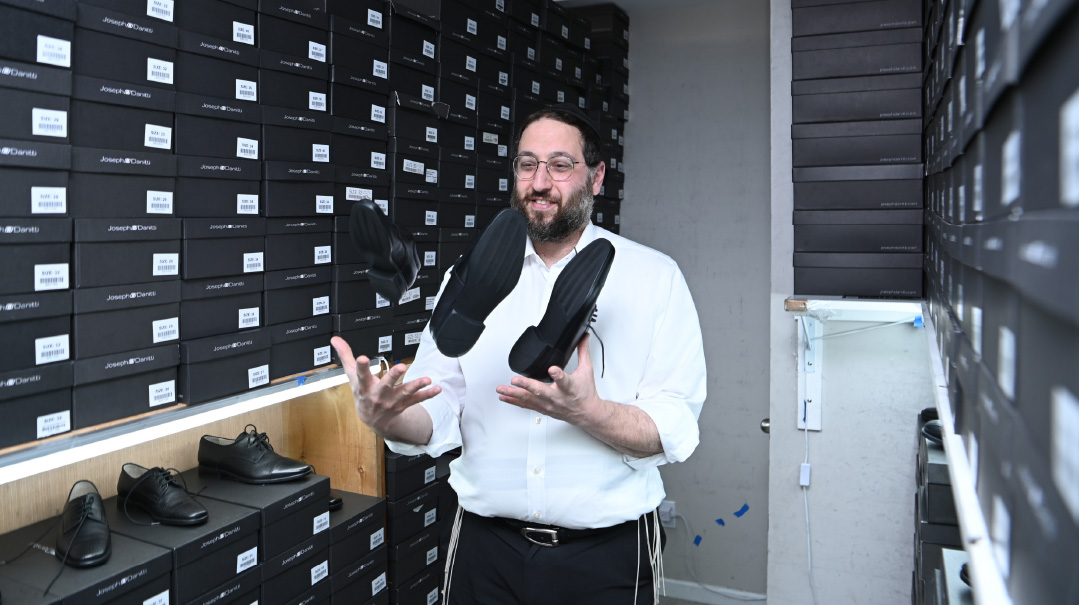
S
even years ago, Yossi moved into this house. He had been learning in kollel for about 15 years at the time, and someone who knew he had an extra room in the basement and that he was looking for a way to make a living approached him with an offer.
“He had this idea to cater to the yeshivah oilem by selling high quality shoes at a decent price — no such concept existed at the time,” Yossi remembers.
Yossi made the basement available to him at no cost, and he helped him get the business going. The original business model was to find closeouts from suppliers whose style matched what the Lakewood market was looking for at the quality they needed and for a price they’d be willing to pay. Quality and price were easy to source, but it was the style — classy, low-key, and all-black, of course — that was difficult to obtain.
When Yossi and his partner did land their hands on a shipment, they’d have it delivered to the basement apartment, hang up some signs in the yeshivah advertising their two-hours-a-day store (8 p.m. to 10 p.m.), and help outfit men who came by.
But within several months, it became clear that they needed a new model.
“There aren’t a lot of companies out there making our kind of shoes,” says Yossi.
The original owner settled out of town and decided he’d design his own shoes. When a cousin in the clothing industry mentioned an upcoming trade show on the West Coast, Yossi — without any previous industry knowledge, but laser-focused on getting a shoe that was the right fit for his clientele — boarded a plane to Los Angeles.
“I was never at a show before,” Yossi recalls. “I had no idea what I was doing.”
He entered the conference center lined with hundreds and hundreds of booths, headed right over to the shoe section, and started talking to manufacturers.
“I didn’t want something cheap. I wanted quality,” he says, and instead of engaging with the Chinese manufacturers, he landed upon a manufacturer from Turkey. “It was mamash Hashgachah.”
Initially, the manufacturing process was arduous; the Turkish company didn’t take the decidedly noncorporate-sounding Lakewood yungerman too seriously. They filled his orders eventually, but not with the attention and care reserved for “real” clients. That quickly changed.
“People loved our product,” says Yossi. “There was an explosion in demand.”
The Muslims in the factory in Turkey starting respecting their devout buyer back in the US, and a working relationship developed.
Yossi has experimented with other factories, but they never caught on.
“Sometimes there is pushback from a manufacturer to a design that you submit, and they want to make some modifications. When we submitted designs to other places, they always wanted to add some outlandish elements to make our shoes more attractive and contemporary — they couldn’t believe the only thing we wanted was all-black shoes without any embellishments. Even though that’s b’davka what we’re looking for. But the Turks respect religion. They understand and appreciate our mindset, which is why we’ve seen success with them.”
Eventually, Yossi became the factory’s biggest customer, importing thousands of shoes. In a nod to the Italian material and soles he insisted his supplier use, he labeled his line “Joseph Danitti” (though he won’t disclose how he came up with that specific name).
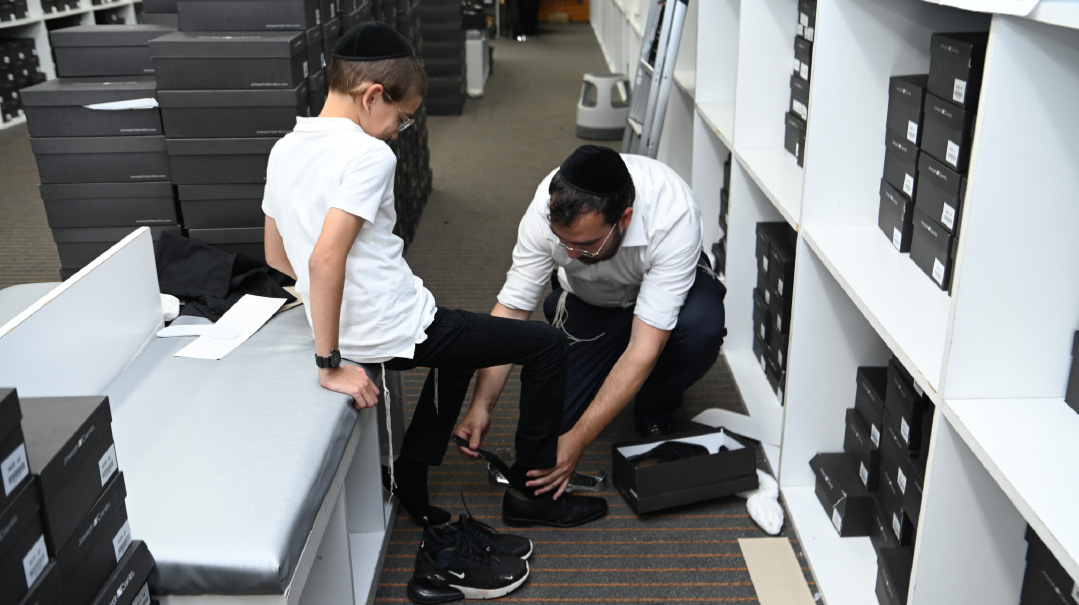
T
he wares may be Italian in quality, but they are Lakewood priced ($89 flat rate per pair) and distinctively Lakewood serviced.
In fact, it’s hard to distinguish customers from those who are here to help.
“All of our sales people are your regular, normal yungeleit,” says Yossi. “Most of them spend first seder in yeshivah and then come to the store afterward. They understand what the people need and want.”
Akiva, a manager I meet in the store, fits this very description. With boots (or shoes) on the ground in Lakewood’s most popular shoe store, he has a good feel for the market.
“In general, a bar mitzvah or mesivta age bochur will want a loafer,” Akiva rattles off. “We have more than 60 loafers that would work. Within that range, usually by looking at the customer, you can sense what kind of shoe he’ll want: the stylish bochurim like a bigger heel, the ‘Cole Haan’ kind of look. A more yeshivish bochur will go for Number 68, our classic penny loafer. Older people prioritize a good fit over current style and are more focused on comfort and durability.”
It’s all by word of mouth, he adds. “Sister-in-law to sister-in-law — they send their husbands.”
As we’re speaking, a customer walks in. His eyes rove the selection — he’s looking for Style 43, which looks suspiciously similar to Cole Haan’s Zerogrand wingtip oxfords. He finds it and picks up a pair, size 42. They fit. He puts them back in the box and goes to pay the standard $89. Time elapsed: under five minutes.
While new customers often want help with their selections, it’s clear the self-serve system is popular. Repeat customers know how to navigate the system, Akiva says, because it’s pretty self-explanatory. All of the shoes are out on the floor, so there is no need to wait for a salesperson to go to the back and get it for you.
In the past few years, Deals on Daniel has expanded in Lakewood and beyond. There are now four stores: Aside from this basement, there is another location with standard hours in a Lakewood retail mall, as well as one in Passaic, New Jersey, and Baltimore, Maryland (where, among the ubiquitous black, a brown and even navy pair can be spotted).
Yet the original is considered a Lakewood landmark.
“Visiting groups make a stop here,” Yossi says. “We’ve become a tourist attraction.”
It’s a chance to see a store catering to a discerning clientele that wants quality, style, uniformity, good prices — but most of all, the ability to get back to the beloved Gemara.
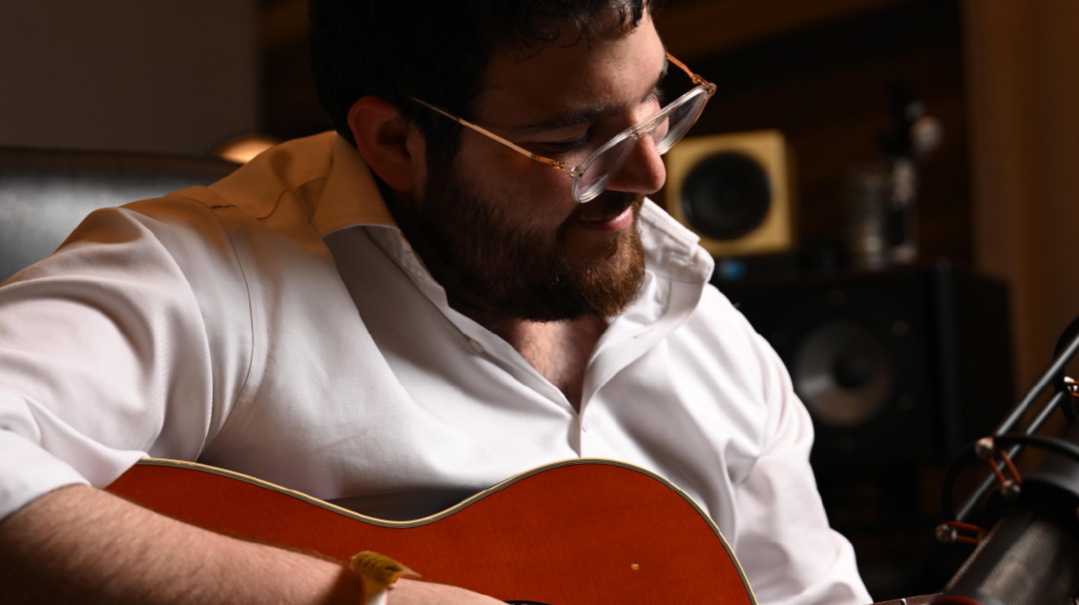
Track Record
Chesky Cherny
Recording studio
ITwas a friendly argument between two dormmates, wholly insignificant, and it should have left little impact. Yet for Chesky Cherny, the conversation he had with a friend as a teenage bochur turned out to be life-changing.
“We were having a conversation if it’s possible for someone to learn a talent, like music,” recalls Chesky, now 28 and married with three children. “My friend held that if you’re not musically inclined, there is no way you can learn how to play an instrument.” Chesky held punkt farkert; if you’re not musically inclined, you realize how much harder you have to work, and you’ll be motivated to master the art.
That’s where the conversation should have ended, friendly banter between two bochurim trained in lomdus as they headed back to their Lakewood, New Jersey, Mesivta Keren HaTorah dorm after putting in a long day in the beis medrash. But Chesky, who wasn’t musically inclined, was determined to prove his friend wrong — and himself right. That week, he called Sweetwater, the largest music retailer in the world, and placed an order for an inexpensive ukulele (a guitar-like instrument that retails on Amazon for $39.99) and a beginner’s guide on how to play. He followed the instructions, practiced, and slowly the cacophony of noises emanating from the small instrument improved, and the ukulele started producing harmonious sounds whenever Chesky put his hands to the strings. He’d proven his point, and he’d officially won the debate.
Still, Chesky wasn’t “a music guy.”
“I enjoyed a good song like everybody else, but I wasn’t the guy who knew all the latest CDs and the newest songs and singers,” he says. “I just enjoyed tinkering around with different instruments during bein hasedorim and bein hazmanim, but it was nothing more than that.”
Ironic, considering that today Chesky is a master music producer and the proud owner of The Side Yard Studio, a full-service musical production studio in Lakewood that has produced songs and CDs for singers like Naftali Kempeh, Motti Ilowitz, and Beri Weber.
Considering how far he’s come, if Chesky’s career trajectory is a song, those ukulele sessions weren’t even the introductory notes.
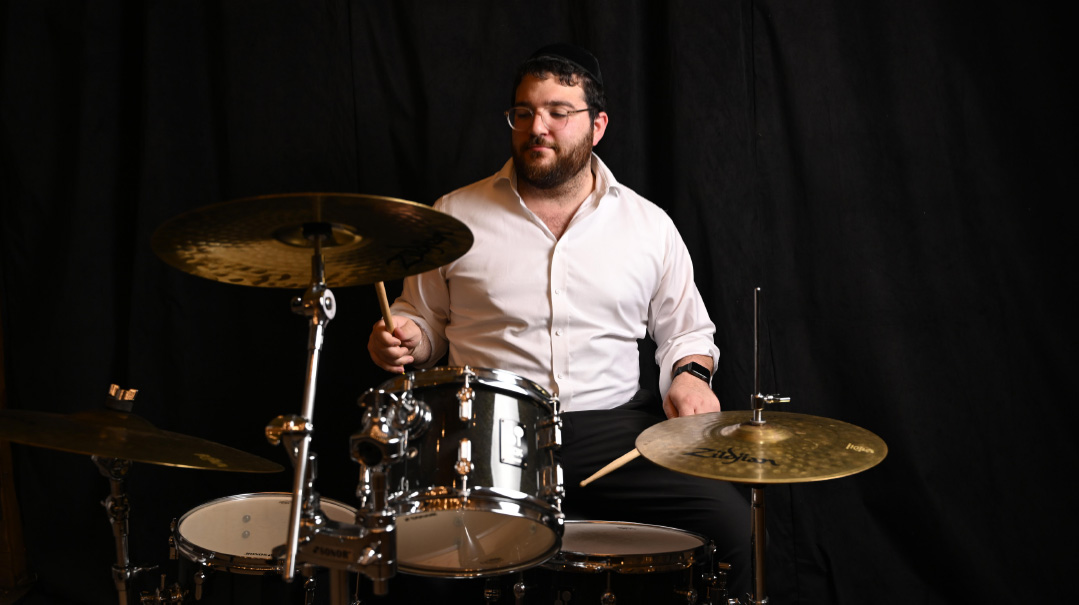
N
otwithstanding his slow start, Chesky continued to explore — and master — the art of music. The following bein hazmanin, he added quite a few instruments to his repertoire, teaching himself piano and clarinet. The next Chanukah, he wrote his first song. When I ask him what the words are, he has to think a few moments to jostle his memory.
“Chasoif,” he finally recalls. “I just started singing words to a tune that I played, and it worked. But I didn’t think anything of it at the time, I just sang it to some friends.”
He would write his own compositions at irregular intervals, enjoying the task of putting words to tunes he composed, and 18 months later, when he went to Eretz Yisrael to learn in Rav Moshe Wolpin’s yeshivah in 2015, Chesky decided to record his original “Chasoif.”
“Not for public consumption, not even for anybody,” he’s quick to clarify. “I just wanted to do it stam.”
Chesky reached out to Zev Becker, today a well-known producer on the Israeli music scene, who was then just starting out with his own studio. Becker agreed to record Chesky’s song, but the $500 price tag was too much for the yeshivah bochur to swing.
“I skimped and saved for three months,” remembers Chesky, who also took on a side hustle to fund his new pet project. A matzah bakery on Rechov Yechezkel offered five shekels for every cup of flour hand-ground in its bakery, and Chesky would head there after night seder, both to get in some physical activity as well as to save for his recording. (The bakery’s hand-activated mills are made up of two large stones, one stationary while the other moves in a circular motion, Chesky explains. One of the stones has a hole through the middle, and the kernels are poured into the hole. They settle in the space between the two stones, and when the mill is activated, the kernels get crushed between the stones, turning them into flour. The labor is backbreaking; the five-shekel compensation is an added incentive to the exercise.)
Several pounds of flour later, Chesky had the $500 he needed for his recording. But both Becker and his ambitious customer were novices, and the estimate was barely enough to get them a few minutes of recording time, so they decided together not to go ahead with the project. Even though he didn’t record then, seeing all the elements of music production — hiring musicians, arranging, mixing, vocals — gave Chesky a taste of the industry, and every subsequent off-Shabbos found him at a computer kiosk, reading and watching tutorials about how to record music. The money he had reserved for his initial recording went to purchasing a cheap $60 mic and $50 audio interface (a piece of hardware with an outlet for a mic that converts the music into readable code for the computer, and in turn, the computer’s notes, into playable music). He tinkered around with his new toys, enjoying the thrill of learning new tricks.
Soon, a friend asked Chesky if he would record him singing “K’ayal Ta’arog,” and Chesky, thrilled to have his first paying client, threw himself into the project.
He returned to America, and a shadchan, who knew nothing about Chesky other than the fact that he played a smattering of piano, suggested Chana Arfa from the Lower East Side, whom she also knew little about other than the fact that she played music. The musical couple married in 2017 and settled in the Ramat Eshkol section of Jerusalem. Chesky invested $1,000 of their chasunah money in a low-budget microphone and recording interface, which the couple set up in the one bedroom of their one-bedroom apartment, converting their walk-in closet to the master bedroom. Chesky, who was in kollel at the time, proceeded to advertise his recording studio, named Tzaad (his third name is Tzadok), to a clientele that consisted mainly of bochurim. Going rate: 150 shekel an hour.
“They wanted to record songs for their uncles’ chasunahs, stuff of that nature,” Chesky says.
He would meet the bochurim in his apartment during bein hasedorim to record. At night, Chesky arranged the music so he could give his clients a professional recording. He enjoyed the work, which provided him and his wife extra funding for their life in Eretz Yisrael.
When Covid hit in March of 2020, the Chernys returned to America. Chesky had seen there was enough of a demand for professional recording that he could make back an investment in equipment and materials — and he knew it was something he enjoyed doing bein hasedorim.
The couple rented a basement apartment and turned the spare room into a professional-grade studio. Chesky sound-treated the walls himself, adding soundproofing insulation, and he painted it in warm, relaxing colors to allow artists the space to sing without pressure. The Side Yard Studio, the name Chesky chose for his new venture, reflected, on a practical level, the location of the door to their apartment, as well as the informal vibe he wanted to invoke.
Chesky spent first and second seder in Yeshiva Gedolah Toras Refoel (“Rabbi Strickman’s yeshivah”), and from 1 to 3 p.m. he would head home to record songs for clients and network with up-and-comers in the industry. During seder, his wife would use the studio, recording songs for girls and women, then Chesky would pull in from first seder, and the Side Yard Studio men’s hours would begin.
He invested heavily in networking with promising musicians. “I’d hire some of these new young stars just to come jam with me for an hour or two, even when I didn’t have a project to work on with them, just so we could network and get to know each other, to build a relationship,” he explains.
Those relationships paid off, and soon the biggest names in the Jewish music industry, which by now included some of his early investments such as famed guitarist and singer Motti Feldman, were calling The Side Yard Studio.
“I still write, compose, and arrange a lot of original music for Motti,” Chesky says. “That close connection with a musician of his caliber took things up a notch for us.”
A year ago, Chesky’s two-hour-a-day business had expanded enough that he took the next big step, renting a dilapidated garage behind a home off Route 9. He got to work renovating the place himself, putting up walls, installing equipment, even building out a custom engineer’s desk for himself. (He started with a simple IKEA office desk and added the necessary woodwork to hold his computer, double screens, and mixers.) Chesky outfitted the space to make it attractive and bright, a place for clients to come and sing to their heart’s content.
His hours haven’t changed — he’s still one to three, and then some more time at night — but his tight timing hasn’t stopped singers such as Eli Marcus, who will schedule those exact hours to drive in from his Crown Heights home to record. In fact, Chesky worked on the vocals for several songs on Marcus’s recent Dugma release. Another special project Chesky worked on was producing “The Mountain,” a song in memory of Dovi Steinmentz a”h, one of the Meron tragedy victims, and the popular “Zacharti,” sung by Naftali Kempeh, Motti Feldman, and Motty Ilowitz.
Yet even as Chesky’s work hits playlists for a frum music audience all over the country, even as productions from The Side Yard Studio gain popularity, at 3 p.m., Chesky pauses his current project and turns off the lights.
He’ll return to his studio later, but now he’s headed back to yeshivah to produce the ultimate work, the shiras hachayim.
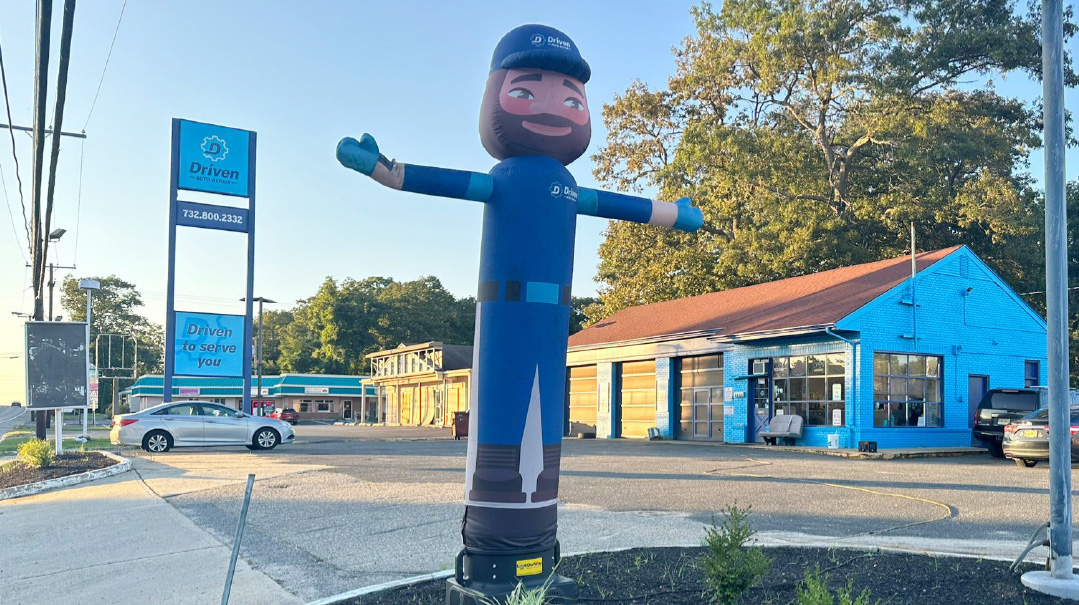
Driving Force
Shimon Skaly
Car shadchan
Shimon Skaly is a shadchan.
Before and after first seder, in the afternoon and then at night again, he’s on the phone making matches, gently offering the sagacious advice that comes from being in an industry long enough, and making himself available to tie up any last minute complications.
Except it isn’t soulmates that the Boston native is pairing up. He’s setting up car owners looking to get rid of their vehicle with folks looking to get their hands on one.
The complexities in this matchmaking business are several gears less sensitive than the emotions at play in the other shadchan business. But the key skills — finding two sides that will appreciate what each has to offer, making introductions, and seeing a deal to the end — are the same. They are deftly employed by Shimon, the proud owner of Car Shadchan, a unique service in the Lakewood used-car industry that facilitates auto sales directly from owner to buyer.
Shimon’s own drive to start this brokering service was jumpstarted in 2017 when he was in the market for a second car, not just numerically, but also in functionality and price.
“I lived a decent distance from yeshivah,” he remembers. “My wife took our car to work, so I needed a car that would work well enough just to get me to BMG and back.”
Shimon searched Craigslist, an online marketplace that allows private users to sell and buy items. When he found a 2001 Honda Civic, he contacted the seller, negotiated him down to just $1,000, and drove up Route 9 to pick it up, happy to land a deal. When he got back to Lakewood, though, Shimon realized he was on the wrong end of the bargain.
“The guy had played around with the engine and removed the thermostat, causing it to malfunction.”
The seller — who Shimon had been in touch with constantly the preceding two weeks — suddenly went AWOL, and the cost to repair the car was almost more than he’d paid for it in the first place.
This interaction spurred Shimon to action.
“I realized the only responsible way to buy a used car without paying the upcharge from the dealer would be to create an internal Craigslist, for and by people we trust,” he says.
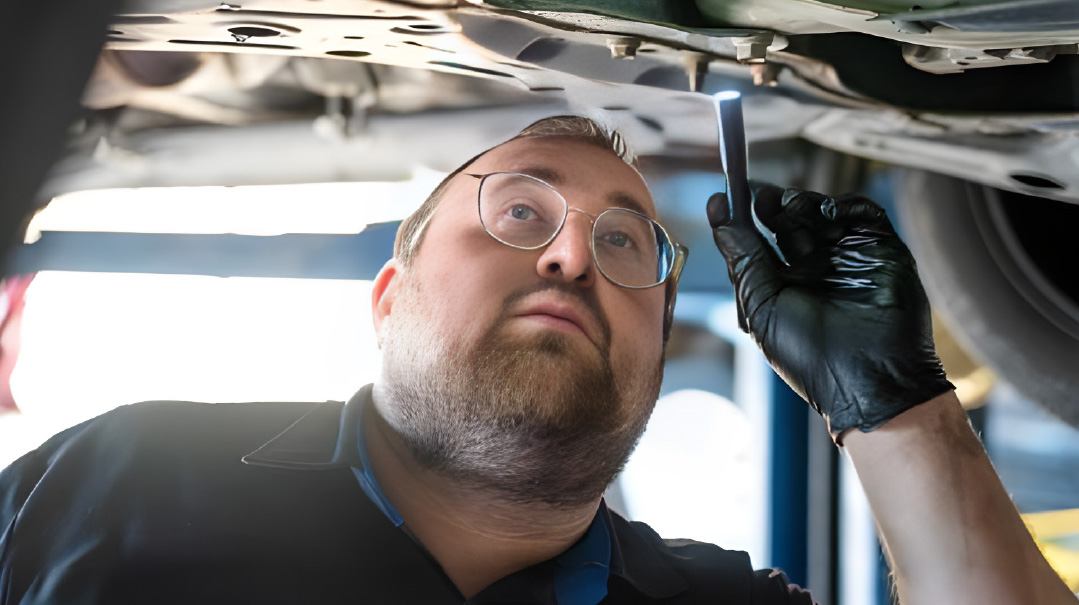
T
he yeshivah world’s “Craigslist” is the fabled coffee room bulletin board, appearing in yeshivos and shuls around the world. On these grand boards, the marketplace of the frum entrepreneur, signs abound, hawking everything from slightly used cribs to sets of old shiurim cassettes.
In 2019 Shimon added his own simple sign to the colorful potpourri of notices. “Looking to Buy/Sell a used car?” his sign says. “Call this number.”
The calls started pouring in: from yungeleit ready to upgrade to a minivan who didn’t have time to deal with the nitty-gritty of showing their sedans to potential buyers, to people looking to purchase a car from someone they knew understood their needs. Shimon was in business.
Interestingly, a friend of Shimon’s had actually thought of the same concept and came up with the name “Car Shadchan,” but his model had stalled. He offered to sell the trademark, and Shimon bought the name.
Next, he set up a system: Sellers would send him their car details; he’d ask specific, pointed questions, and if everything sounded good, he’d list it in his advertisement that ran in two local publications.
Initially, Shimon instituted a roadblock to ensure he was getting reliable cars. By charging sellers a portion of the (nonrefundable) shadchanus fee up front, he would weed out dubious sellers who didn’t want to lose their fee when a potential buyer backed out of buying a “clunker” after having it inspected. Five years into the business, though, he’s found it to be an unnecessary speed bump.
“I’m dealing with erlicher people, and everyone here is honest and trustworthy,” Shimon says. “No one is trying to beat the system.”
When a potential buyer calls Shimon, he’ll first inquire about their budget, then ask more detailed questions about what they are looking for. “Single girls usually want something as low maintenance as possible, while bochurim want something a little bit suave,” he says. As a good shadchan, he’ll offer some helpful tips to buyers and try to steer them in the right direction. He’ll tell families he recommends the Honda Odyssey or the Toyota Sienna and that he’s found the old Dodge Caravans to be surprisingly reliable.
Once a match is made, Shimon sends the potential buyer to the seller to take the car for a test run. These arrangements can get tricky at times. Shimon once sent a buyer to test drive a Toyota Avalon, instructing him, “The keys are accessible.” When the buyer arrived, he spotted an Avalon that matched the shadchan’s description, peered inside, and saw the keys in the cup holder. He hopped inside, enjoying the smooth drive of the luxury sedan — until flashing lights appeared behind him. Lakewood Police officers surrounded the hapless client, who was told he was being arrested for car theft.
The buyer placed a quick call to Shimon (who else to blame but the shadchan?), who ran to the scene. It turned out that there were two white Avalons at the car owner’s address, and unfortunately for the buyer, he took the wrong one. When he saw his car being driven away in broad daylight, the owner of this Avalon called the police. Thankfully, they were able to sort it out, and everyone left after a good laugh (and a warning from the police that a well-known theft prevention method is not to leave keys in an unlocked car).
As a full service provider, Car Shadchan also offers help with paperwork. This is a particular benefit for his clientele, most of whom don’t have internet access. (In New Jersey, a new vehicle can be registered in the owner’s name only in person at the Motor Vehicle Commission, but an appointment there requires an online booking.)
T
he car market is not an easy one right now, having seen some of the steepest price increases since Covid caused a surge in demand for semiconductor chips and put the brakes on manufacturing.
“We’re actually coming down in prices, but the cars our community wants are still pretty high, because the limited production of those is not keeping up with the high demand,” Shimon explains.
Thankfully, he does see an end to the crisis and light at the end of the tunnel, and he’s optimistic. Production will pick up and the frum world’s favorites will once again see their sticker prices drop to pre-Covid levels (accounting for inflation) — and the greater abundance of new vehicles will hopefully free up some used cars. Then Lakewood’s shadchan will happily make himself available, before and after first seder, and then again at night, matching drivers up with the car of their dreams.
Mazel tov!
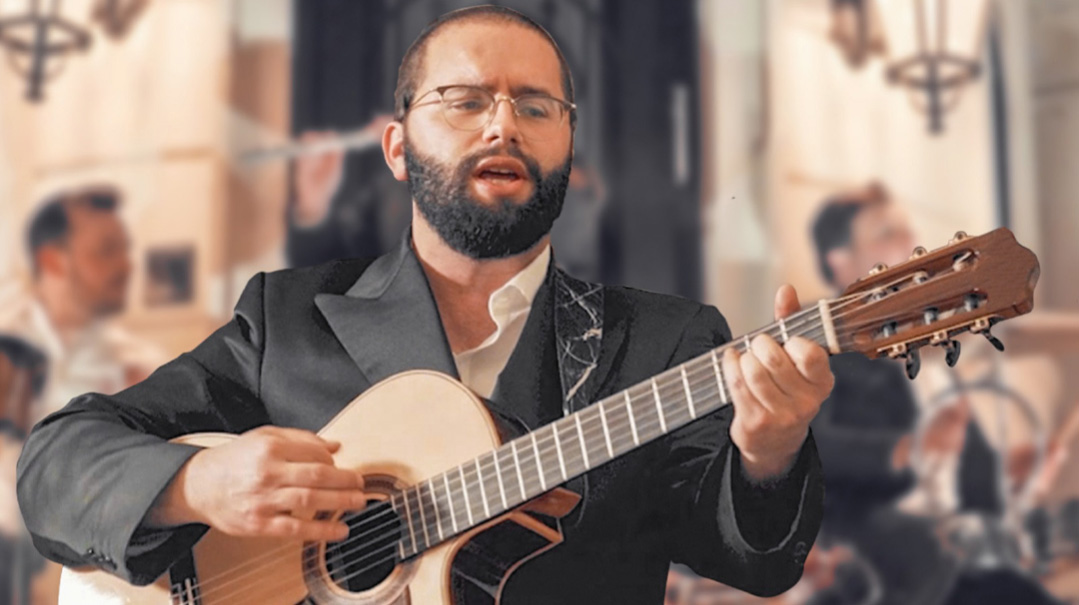
The Right Chord
Moshe Katz
Kumzitz singer
It’s a warm, starry night, and there is a buzz of activity in the backyard of one of the homes lining this upscale cul-de-sac in Lakewood, New Jersey. Waiters make their rounds, balancing trays of hors d’oeuvres and cold drinks and handing them out freely among the crowd. A lone shtender, hastily removed from the host’s study for this evening’s speaker, waits on the side. For the time being, the focus is on the table manned by two yungeleit happy to charge your credit card monthly for the worthy organization behind this lovely parlor meeting.
The crowd continues to grow, the chatter picks up.
Suddenly, slowly, the soulful strums of a guitar can be heard from three speakers that line the periphery of the backyard. The tunes range from the poignant Carlebach melodies to Naftali Kempeh’s lilting songs to Israeli sensation Ishay Ribo’s fast-paced contemporary tracks — and they are all tasteful, all yeshivish.
The singer is none other than Moshe Katz, one of the most sought-after names in musical performances today, whose audiences appreciate his unique ability to musically convey the tunes and messages of the beis medrash. It is, after all, where he spends his days.
Nearly every evening during his busy seasons, after two full sedorim in Beth Medrash Govoha and a quick supper with his family, Moshe packs his 2007 Toyota Sienna with a state-of-the-art speaker, three Shure microphones (one for himself and another two for the aspiring singers in the crowd), an equalizer device, a cajon (a box-shaped percussion instrument that gets passed around to table drummers), and his beloved acoustic Ovation guitar.
F
or four years Moshe has been running kumzitzes across the tristate area — at nearly every genre of event on a frum calander: parlor meetings, simchahs, camp performances, shul dinners, family get-togethers, and his personal favorite, siyumim.
Once he arrives at the venue, he finds himself a good corner, quietly sets up his equipment, and without fanfare, starts singing. Moshe is not a star performer — he doesn’t want nor does he expect adoring attention or an exclusive spotlight. His goal is to just be there, to share the gift of music with his fellow Yidden, and as he’ll inevitably share with those around him, to make a “ma-aa-jor matzav.”
At every event, Moshe walks in ready to regale the attendees with the cadre of songs he’s handpicked for the evening.
“For a kumzitz with bochurim, they like the newer songs, like ‘Tatteh’ and ‘Shaarei Shamayim,’ ” Moshe explains, enunciating each song with its full tune. “Carlebach niggunim are good for any event, parlor meetings are more background music, and siyumim will be Torah songs, and in more out-of-town-type communities, they’ll go for ‘Hamalach Hogoel,’ ‘V’zakeinu,’ and of course, ‘Am Yisrael Chai.’ ”
Moshe will start with a soft tune, slowly, quietly, and once he has the audience’s attention, he transitions to musical storytelling, interspersing melody with message. He holds his hands steady on the guitar strings, strumming them just enough to give off that magical background rhythm, and soon Moshe closes his eyes and begins to hum with a decidedly yeshivish flavor.
“Rav Yankel Galinsky used to say,” Moshe says in his melodious voice, “that when a person undergoes a medical procedure, he seeks out the best doctor, researches the hospital, and insists on the only the best team. Yet when a person flies on a plane, does he first inquire as towards the pilot’s air safety record? Does he look at where the pilot trained or what kind of safety features that aircraft has? Why not? According to statistics, flying has a greater danger than surgery, so why all the homework when it comes to doctors?”
Moshe looks around at the crowd. The low conversation has dimmed to a whisper, their curiosity piqued and eyes steadily trained on him as they await the answer.
“The answer,” says Moshe, picking up his singsong again, “is — the answer is, that when a doctor performs a surgery, he collects his check and goes home. But when you go on a plane, the pilot is flying with you. So you can be assured that he has his passengers’ best interests in mind, because… he’s in it with you.”
“Rabbosai” — here the soft strumming becomes a full-blown melody — “Dovid Hamelech tells us that even when we go into the valley of death, we shouldn’t worry — lo irah ra — because You are with us, ki atah imadi.”
And on cue, Moshe strikes up a heartfelt lo irah ra.
The entranced crowd joins as the music soars and the refrain ki atah imadi is given a special emphasis with the new understanding.
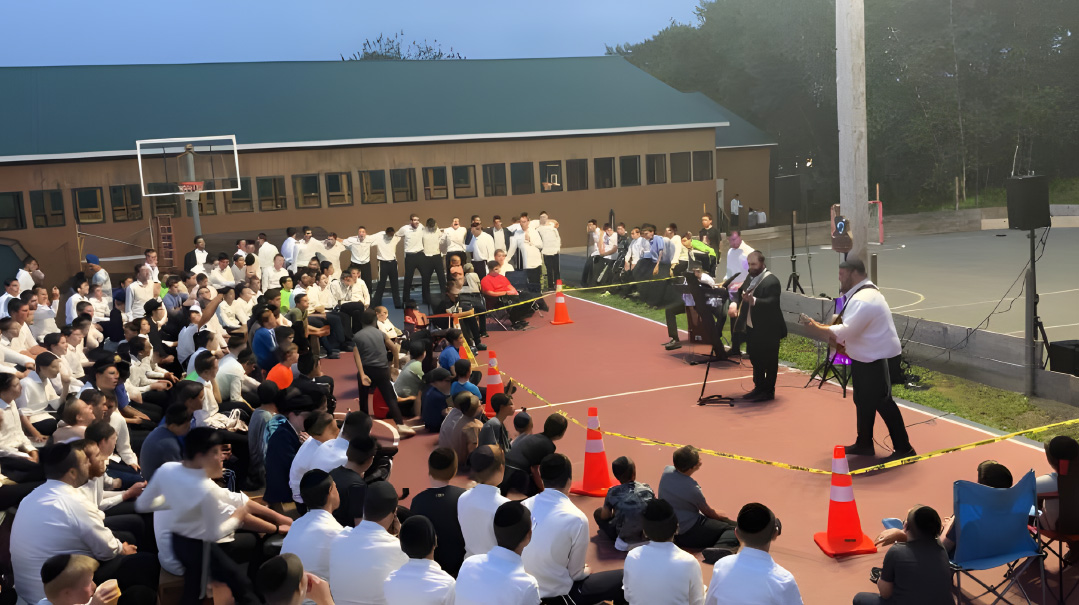
M
oshe’s singing career traces itself 15 years back, to the dormitory of Bais Hatalmud yeshivah in the Bensonhurst section of Brooklyn, New York, where Moshe learned as a bochur. It was toward the end of a long, leap year winter zeman, Moshe remembers. And they were learning Yevamos, one of the most complex masechtos in all of Shas, as the cases presented in the Gemara involve complex family structures as it deals with the mitzvah to marry one’s childless brother’s widow.
One night toward the end of the zeman, Moshe picked up his friend’s guitar along with a Jewish songbook he’d seen lying around. He positioned his fingers as the book instructed to make different chords and started strumming. Moshe learned one song, and then another, and the young bochur started looking forward to his nights, where he’d be able to sneak in a few minutes of music. Though his dormitory sessions weren’t particularly professional or lengthy, Moshe realized he had a knack for music. Soon, he was expressing his budding musical prowess at the occasional bein hazmanim kumzitz in his friends’ dirahs.
When Moshe married in 2009, he purchased his own guitar. He would play intermittently, enjoying the music as he polished his sound. After learning in kollel for seven years, Moshe asked his older brother, a rav in the Pitney area of Jackson, New Jersey, for parnassah advice. His brother suggested he use his guitar as a means of parnassah, and handed him a $100 bill to be used towards his first advertisement in a local paper, BP Weekly. Another rav he was friendly with, Rav Zalman Sorotzkin of Bais Medrash Lutzk, started recommending Moshe to mispallelim who were hosting events. So started Moshe’s kumzitz career. He’d share heartfelt songs and vertlach, all solidly grounded in the beis medrash where he spent his days, and his easygoing manner, coupled with his beautiful voice, gained a following. Moshe slowly became the singer for events where hosts wanted not just refreshing and enjoyable music, but also the whimsical stories and vertlach woven into the soulful strains.
“Or where they’re looking to knock a kumzitz,” Moshe singsongs.
T
he events where Moshe finds work are also frequented by faces he is familiar with from first and second seder: the roshei yeshivah of Beth Medrash Govoha. In yeshivah, Moshe is in his comfort zone, one of the thousands of yungeleit hunched over their shtenders, but at a simchah, he’s on stage, guitar and microphone in hand. The roshei yeshivah inevitably make a beeline for the musician, going out of their way to make sure he feels comfortable in his role.
Moshe recently sang the Carlebach “Lulei Sorascha” classic at a siyum, and after Rav Yeruchem Olshin finished his remarks, he detoured to the corner on his way out to relate a personal anecdote.
“I visited the succah of Rav Simchah Zissel Levovitz, a son of the great Mirrer mashgiach, Rav Yerucham Levovitz, as a youngster,” the Rosh Yeshivah told Moshe. “Rav Simchah Zissel’s wife was a sister of Shlomo Carlebach, and Carlebach was in the succah that evening when he started humming a tune to the timeless words of lulei sorascha.” The Rosh Yeshivah reminisced about how the song quickly caught on.
“Until today, when I hear the tune, it brings me back to that succah of long ago, where it was first composed,” he told Moshe. The Rosh Yeshivah then thanked Moshe for his beautiful singing — “You sound better every time I hear you,” he said — and then headed on his way.
Another time, Moshe was at a sheva brachos that was graced by Rav Dovid Schustal, another one of the Lakewood roshei yeshivah. Moshe was near the head table, and he meekly greeted the Rosh Yeshivah, almost apologizing for his need to do this for parnassah. Rav Schustal laughed.
“We say, ‘Avinu Malkeinu, malei yadeinu mibirchosecha.’ The meforshim explain that we’re asking Hashem that our maasei yadayim should be filled with brachah. You’re using your hands to play guitar — and you should be matzliach!” thundered Rav Schustal. He then added a quip he once heard from a Yerushalmi Yid: In parshas Ki Savo, the Torah tells us that we will merit Hashem’s brachah, “u’bechol mishlach yadecha — in everything that you put your hand to.”
“You see,” said Rav Shustal, “you have to do in order to receive brachah!”
Of course, there are occasions when the crowd doesn’t join in, when the food and conversation are more alluring than the sweet tunes wafting through the air. Even so, Moshe stands there just the same, confident that somewhere in the crowd, his notes are hitting home.
“I was once hired for a parlor meeting, and no one was joining in,” he remembers. “There wasn’t much I was able to do about it, so I just stood there doing my thing.”
At the end, when he was packing up his gear, a man approached him.
“I just wanted to tell you that I had a very tough day, I’m going through a difficult parshah,” said the man. “I just sat here for three hours doing nothing but listening to you. You were mechazeik me — thank you.”
“You see?” Moshe smiles, the timbre of his voice easing back into kumzitz mode. “No matter if you know it or not, there is always someone out there who is listening.”

All That Racket
Mordechai Pacifici
Tennis coach
Thwack!
The small yellow tennis ball flies straight into the mesh net before boomeranging right back at the player whose fierce swing propelled it across this Jackson, New Jersey, tennis court. He’s breaking a sweat, and it’s his third try at getting a rally going, but he’s not giving up.
On the opposite side of the net stands a tall, fit tennis player, decked out in full game regalia and coaching his protégé.
“Keep your wrist relaxed” — he demonstrates with his own — “and your arm should be extended when you make contact with the ball, away and in front of your body.”
Our hero concentrates, gives the ball a good bounce and — pop — another swing. This time, the ball sails smoothly over the net, where the coach easily bounces it back. The rhythm gets going. He can do it.
Tennis coach Mordechai Pacifici has a structured approach to helping his clients improve, or begin, their game. He starts with the basics — optimal standing position, the ideal way to hold the racket, and the methodology of the perfect swing. Once a client masters that, he moves on to game strategy, getting his clients into the rhythm and pushing them to improve.
Not every client will achieve optimal performance levels, but Mordechai has a different metric to determine success.
“For me, success is giving the client what they want,” he says. For one, that means helping him understand tennis and get comfortable hitting the ball. For another, it means attaining the skills to enjoy a good, competitive game. Yet another, who already plays on an advanced level, will utilize Mordechai’s services not so much for skill and technique, but simply because he needs a partner who will keep him on his toes. Regardless of a player’s level, he can rely on Mordechai to be several points ahead.
T
he confidence Mordechai’s clients have in him is not misplaced. He’s skilled, agile, and has over a decade of daily practice under his belt. But students of this tennis pro may be surprised to discover that before and after flexing his athletic prowess, their coach is safely and firmly ensconced in the walls of the beis medrash.
Born in France, Mordechai attended yeshivah in Paris for high school. He immigrated to the United States when he was 16, and learned in New York in Yeshiva Gedolah Zichron Moshe of South Fallsburg under Rav Elya Ber Wachtfogel. He then went to Ner Moshe in the Givat Moshe section of Jerusalem to learn under Rav Shalom Schechter before going to Lakewood. After his marriage, he and his wife moved to Flatbush, where he joined the kollel Yeshiva Bais Yosef Novardok.
As a child, Mordechai had played tennis — a French favorite — and even attended a tennis academy, but he all but abandoned his racket as a teenage bochur. In kollel, in an attempt to take up some form of exercise, he decided to pick up the sport again. He mentioned to a friend that he was reconsidering tennis, and the friend challenged him to a game. That performance wasn’t particularly flattering, Mordechai recalls. But it incentivized him to get back into tennis.
Mordechai would put in a solid first seder every day in kollel before biking to Marine Park, an oasis of playgrounds, grass (a rather uncommon amenity in Brooklyn), and tennis courts. His commitment to the game was as firm as the poly Technifibre strings woven into his Wilson Pro Staff racket. Summer, fall, winter, and spring — partner or not — Mordechai was in the park at 2 p.m. focusing on his game.
“I went religiously every single day after first seder for an hour or two,” he says. “At times, I was the only one in the park, and I would hit the ball by myself against the wall, constantly improving.”
At one point a friend approached him and asked if Mordechai could teach him to play. Mordechai happily complied, and did it gratis. Another request followed, and then another. The frum tennis oilem is by nature interconnected as the game demands a partner, and word of the yungerman who was not only an all-star player, but a great coach, spread quickly.
Mordechai’s strict bein hasedorim hours meant his teaching time was limited to people who were available between 2 and 4 p.m., so his core clientele became adults whose schedules allowed them the flexibility of showing up midday for a lesson — either business owners or yungeleit like himself.
“Tennis happens to be a great sport for people in the middle-age bracket looking to stay energetic, and it’s easy to arrange a game,” says Mordechai. “You need just one partner. It’s a non-contact sport, plus it keeps you moving constantly so you stay active.”
His presence on the court was an advertisement in and of itself, and soon enough, Mordechai’s bein hasedorim calendar was packed with clients ranging from beginners to advanced players looking for a competitive game.
Like a sugya, he would methodically break down the game for his clients: how to position, hold, hit, move, go forward, come back, defend, attack, serve, and slice. In this discipline, he’s not a man of words.
“Tennis is not taught in the classroom,” Mordechai says, “it’s taught by hitting.” So even while he verbalizes the basics, he insists that his students perform. For a novice, he’ll position the player, show him how to hold the racket, and bounce the ball at him so all he has to do is swing — and connect. Once they master that elementary level, he’ll make players move to get the ball. “I try to get to the other side of the net as quickly as possible, because my experience has taught me that when we get a rally going — that’s when there’s a solid back and forth — the player feels like they’re actually playing, and it motivates them. Once they have that passion, they are willing to put in the necessary hard work.”
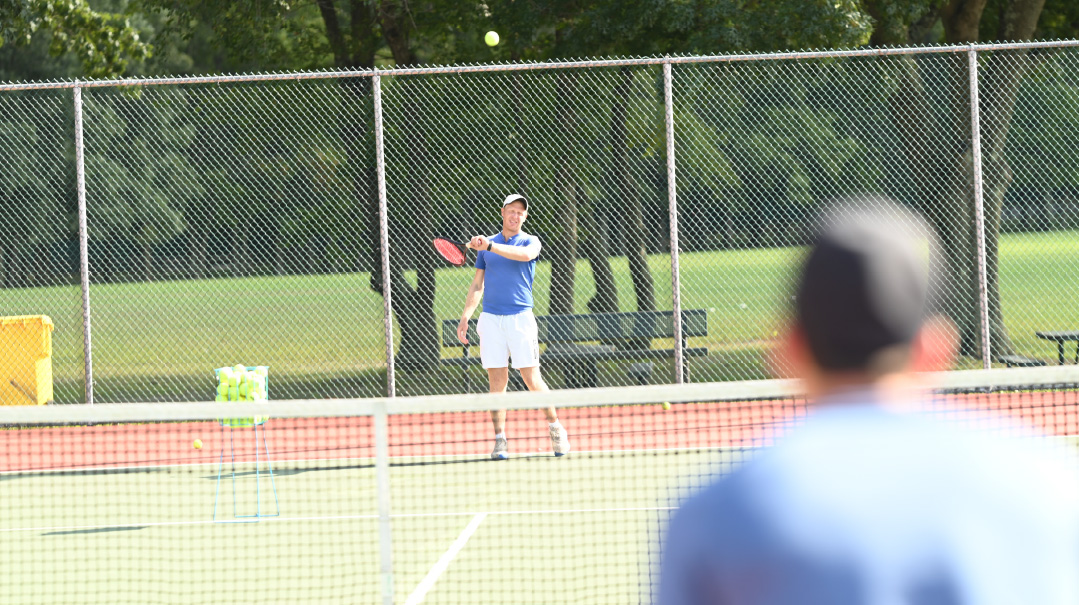
E
arlier this year, after 13 years in kollel in Novardok — and of his bein hasedorim gig in Marine Park — Mordechai and his family relocated to Jackson, New Jersey. The area’s sparse, suburban feel and the sprawling tennis courts dotting Central Jersey allowed him to keep up his coaching, and he soon gained a following in his new location. Here, on a court not far from home, Mordechai continues his calculated — and, hundreds of clients later, proven — coaching methodology, helping players improve their game. He’s become a steady figure on the court, and like the bright, solid painted lines clearly delineating what’s fair game and what’s out of bounds, Mordechai keeps his business squarely after first seder.
During seder, he’s back in the beis medrash, plowing through the sugya.
“Sometimes I’ll see people do a double take when they see me in the beis medrash,” he says of clients who are surprised that the frum tennis coach is even more comfortable in his seat in front of a Gemara. “I do love and enjoy tennis,” Mordechai says, “but it’s something I do, not who I am.”
Several years ago, Mordechai was upstate, and he was invited to give a Minchas Chinuch shiur. Some participants were familiar with the maggid shiur’s other occupation.
“You think he’s good at tennis?!” Mordechai overheard one fellow saying to a friend. “You should hear him say shiur!”
(Originally featured in Mishpacha, Issue 980)
Oops! We could not locate your form.







